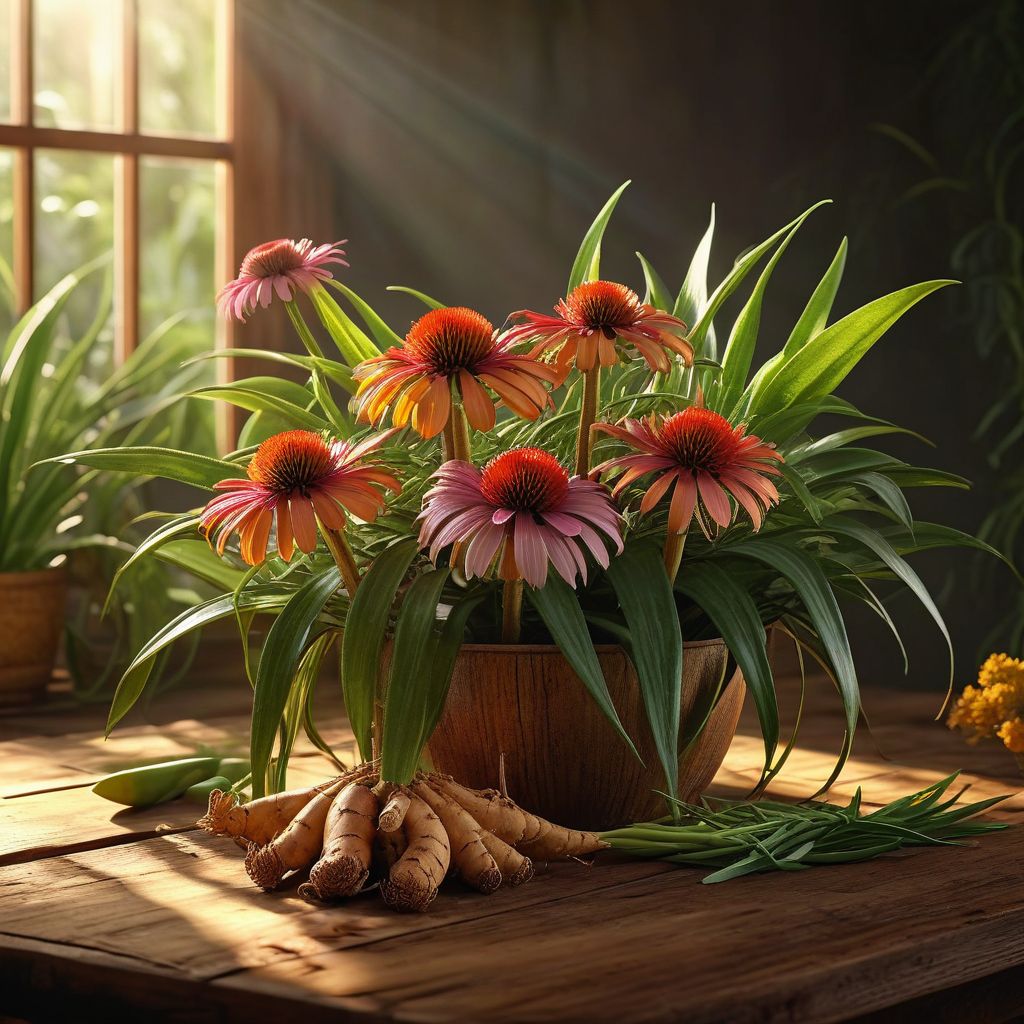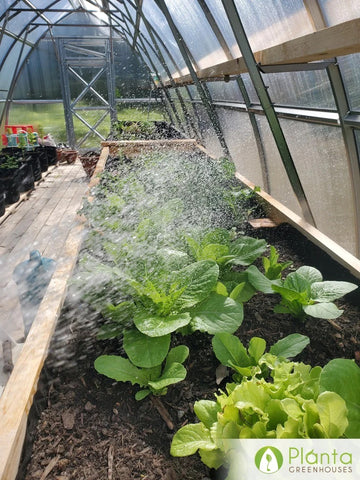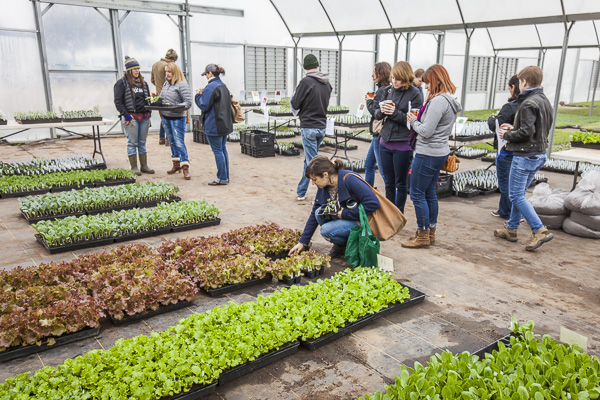Key Takeaways
-
Greenhouses provide a controlled environment for growing medicinal plants year-round.
-
Choosing the right medicinal plants is crucial for successful cultivation.
-
Optimal greenhouse conditions include proper temperature, humidity, and lighting.
-
Effective soil and nutrient management ensure healthy plant growth.
-
Sharing your knowledge and success can inspire others to grow medicinal plants.
How to Grow Medicinal Plants in Greenhouse
Starting Your Medicinal Garden
Starting a medicinal garden in a greenhouse is a rewarding endeavor that offers numerous benefits. Not only does it allow you to grow plants year-round, but it also provides a controlled environment that can enhance the growth and potency of medicinal herbs. The first step is to decide on the size and type of greenhouse that best suits your needs.
Consider the following when planning your greenhouse:
-
Space available in your yard or property
-
Budget for initial setup and ongoing maintenance
-
Climate and weather conditions in your area
Selecting the Right Medicinal Plants
Choosing the right medicinal plants is crucial for a successful greenhouse garden. Some plants are easier to grow and maintain, while others may require more specific conditions. Start with plants that are known for their hardiness and medicinal benefits.
“Lavender, chamomile, and peppermint are excellent choices for beginners due to their resilience and wide range of medicinal uses.”
Research each plant’s requirements, such as light, temperature, and soil preferences, to ensure they will thrive in your greenhouse environment.
Factors to Consider
When selecting medicinal plants, consider the following factors:
-
Climate Compatibility: Ensure the plants can thrive in your local climate.
-
Growth Habit: Choose plants that won’t outgrow your greenhouse space.
-
Medicinal Benefits: Select plants that offer the health benefits you’re seeking.
By considering these factors, you can create a diverse and effective medicinal garden that meets your needs.
Popular Medicinal Plants for Greenhouses
Here are some popular medicinal plants that are well-suited for greenhouse cultivation:
-
Echinacea: Known for its immune-boosting properties.
-
Aloe Vera: Excellent for skin conditions and minor burns.
-
Ginger: Used for digestive health and anti-inflammatory effects.
-
Turmeric: Renowned for its anti-inflammatory and antioxidant properties.

These plants not only provide medicinal benefits but also add variety and beauty to your greenhouse.
Seed or Seedlings: Making the Choice
Deciding whether to start with seeds or seedlings depends on your experience level and patience. Seeds are cost-effective and offer a wider variety of plant options, but they require more time and care to germinate. If you’re looking for more comprehensive advice, check out these greenhouse gardening tips.
On the other hand, seedlings are more expensive but provide a head start on the growing process. They are ideal for beginners or those who want quicker results. Consider your goals and experience when making this decision.
Optimal Greenhouse Conditions
Creating the right environment in your greenhouse is essential for the health and growth of your medicinal plants. This involves managing temperature, humidity, lighting, and ventilation.
Temperature Control
Most medicinal plants thrive in temperatures between 65°F and 75°F. Maintaining a consistent temperature is crucial, especially during extreme weather conditions. Use heaters, fans, and ventilation systems to regulate the temperature inside your greenhouse.
“Installing a thermostat can help you monitor and maintain the ideal temperature range for your plants.”
Managing Humidity
Humidity levels play a significant role in the growth of medicinal plants. Most plants prefer humidity levels between 40% and 60%. Too much humidity can lead to mold and mildew, while too little can cause the plants to dry out.
To manage humidity, you can follow these tips for planting and maintaining a medicinal herb garden.
-
Use a hygrometer to monitor humidity levels.
-
Install a humidifier or dehumidifier as needed.
-
Ensure proper ventilation to prevent excess moisture buildup.
Lighting Needs
Medicinal plants require adequate light to thrive. Natural sunlight is ideal, but supplemental lighting may be necessary during shorter days or in less sunny climates. Use grow lights to provide the necessary light spectrum for your plants.
Ventilation and Airflow
Good airflow is essential to prevent mold, mildew, and pests. Ensure your greenhouse has proper ventilation through vents, fans, and open windows. This will help maintain a healthy environment for your medicinal plants.
Soil and Nutrient Management
Choosing the right soil and providing adequate nutrients are crucial for the health of your medicinal plants. Use high-quality potting soil or create your own mix with compost, peat moss, and perlite. For more detailed tips, check out this guideline to growing medicinal herbs.
Choosing the Right Soil
Soil is the foundation of your medicinal plant’s health. The right soil ensures that plants receive essential nutrients, retain adequate moisture, and have good drainage. Most medicinal plants prefer well-draining soil with a pH level between 6.0 and 7.0.
Consider using a high-quality potting mix specifically designed for herbs and medicinal plants. You can also create your own soil mix by combining equal parts of compost, peat moss, and perlite. This mixture provides the necessary nutrients and drainage for healthy plant growth.
Fertilizing Techniques
Fertilizing your medicinal plants is essential to provide them with the nutrients they need to thrive. Organic fertilizers, such as compost, worm castings, and fish emulsion, are excellent choices for medicinal plants. They release nutrients slowly and improve soil health over time.
Apply fertilizer every 4-6 weeks during the growing season. Be cautious not to over-fertilize, as this can lead to nutrient imbalances and harm your plants. Follow the manufacturer’s instructions for application rates and methods.
Composting: Adding Organic Matter
Composting is a natural way to add organic matter to your soil, improving its structure and fertility. Compost provides essential nutrients and beneficial microorganisms that promote healthy plant growth. Start a compost pile or bin using kitchen scraps, yard waste, and other organic materials.
Incorporate compost into your soil before planting and as a top dressing throughout the growing season. This will ensure your medicinal plants receive a steady supply of nutrients and improve soil health.
Watering Practices for Medicinal Plants
Proper watering is crucial for the health and growth of your medicinal plants. Overwatering or underwatering can lead to various issues, such as root rot or stunted growth. Establishing a consistent watering schedule and using appropriate watering techniques will help your plants thrive.
Establishing a Watering Schedule
Medicinal plants generally prefer consistent moisture but do not like to sit in waterlogged soil. Water your plants when the top inch of soil feels dry to the touch. The frequency of watering will depend on factors such as plant type, soil type, and greenhouse conditions.
During hot and dry periods, you may need to water more frequently, while cooler and more humid conditions may require less frequent watering. Monitor your plants regularly and adjust your watering schedule as needed.

“The Secret to a Lush Greenhouse: The …” from plantagreenhouses.com
Proper Drainage Systems
Good drainage is essential to prevent waterlogged soil and root rot. Ensure your greenhouse has proper drainage systems in place, such as raised beds, containers with drainage holes, and well-draining soil mixes. If you notice standing water or soggy soil, take steps to improve drainage immediately.
Using a Self-Watering System
A self-watering system can help maintain consistent moisture levels in your greenhouse. These systems use wicking materials or reservoirs to provide a steady supply of water to your plants. Self-watering containers, capillary mats, and drip irrigation systems are all effective options.
By using a self-watering system, you can reduce the risk of overwatering or underwatering and ensure your medicinal plants receive the right amount of moisture.
Pest and Disease Management
Managing pests and diseases is crucial for maintaining the health of your medicinal plants. Greenhouses can create an ideal environment for pests and diseases to thrive, so it’s essential to take preventive measures and address issues promptly.
Common Pests in Greenhouses
Some common pests that may affect your medicinal plants include aphids, spider mites, whiteflies, and fungus gnats. These pests can cause damage by feeding on plant tissues, spreading diseases, and weakening plants.
Regularly inspect your plants for signs of pest infestations, such as discolored leaves, stunted growth, or visible insects. Early detection and intervention are key to preventing severe damage.
Organic Pest Control Methods
Using organic pest control methods is essential for maintaining the purity and safety of your medicinal plants. Here are some effective organic pest control techniques:
-
Neem Oil: A natural insecticide that can be used to control a wide range of pests.
-
Insecticidal Soap: Effective against soft-bodied insects like aphids and spider mites.
-
Beneficial Insects: Introduce predators like ladybugs and predatory mites to control pest populations.
By using these organic methods, you can protect your plants without resorting to harmful chemicals.
Preventive Measures Against Diseases
Preventing diseases is essential for maintaining the health of your medicinal plants. Here are some preventive measures you can take:
-
Ensure proper air circulation by spacing plants adequately and using fans.
-
Avoid overhead watering to reduce the risk of fungal infections.
-
Remove and dispose of any diseased plant material promptly.
-
Maintain a clean greenhouse environment by regularly sanitizing tools and surfaces.
By implementing these preventive measures, you can reduce the risk of diseases and keep your plants healthy. For more tips, check out our guide on greenhouse gardening tips.
Harvesting and Storing Medicinal Plants
Harvesting and storing your medicinal plants correctly is crucial to preserve their potency and effectiveness. Knowing when and how to harvest, as well as proper storage techniques, will ensure you get the most out of your medicinal garden.
When to Harvest
The timing of your harvest depends on the specific plant and the part you intend to use. For example, leaves are typically harvested before the plant flowers, while roots are best harvested in the fall after the plant has stored energy.
Research each plant’s optimal harvest time to ensure you capture its peak potency. Regularly check your plants and harvest them when they are at their most vibrant and healthy. For more tips, check out these greenhouse gardening tips.
Proper Harvest Techniques
Using the right techniques to harvest your medicinal plants is essential to preserve their quality. For more information on enhancing your greenhouse practices, check out these greenhouse succulent growing tips. Here are some tips:
-
Use clean, sharp tools to avoid damaging the plant.
-
Harvest in the morning when the plant’s essential oils are most concentrated.
-
Avoid harvesting more than one-third of the plant at a time to allow for regrowth.
By following these techniques, you can ensure that your harvested plants maintain their medicinal properties. For more tips, check out our guide on summer greenhouse maintenance.
Storing Your Harvest
Proper storage is crucial to preserving the potency and effectiveness of your medicinal plants. Here are some storage tips:
-
Store dried herbs in airtight containers away from light and moisture.
-
Label containers with the plant name and harvest date for easy identification.
-
Use glass jars or metal tins to protect herbs from air and light exposure.
By storing your herbs correctly, you can extend their shelf life and maintain their medicinal benefits. For more tips, check out these greenhouse gardening tips.
Drying and Preserving Methods
Drying is one of the most common methods for preserving medicinal plants. Here are some drying techniques:
-
Air Drying: Hang small bundles of herbs in a well-ventilated, dark area.
-
Dehydrator: Use a food dehydrator to dry herbs quickly and evenly.
-
Oven Drying: Place herbs on a baking sheet and dry at the lowest oven temperature.
Once dried, store the herbs in airtight containers to maintain their potency.
Sharing Your Knowledge and Success
Growing medicinal plants in a greenhouse is a rewarding experience that can benefit both your health and well-being. Sharing your knowledge and success with others can inspire them to start their own medicinal gardens and promote healthier living naturally.
Connecting with Fellow Enthusiasts
Connecting with other gardening enthusiasts can provide valuable support and inspiration. Join local gardening clubs, online forums, and social media groups to share your experiences and learn from others.
Besides that, attending gardening workshops and events can help you expand your knowledge and network with like-minded individuals. For more insights, you might also consider learning how to host greenhouse tours in your community.

“Organic Backyard Gardening Workshop …” from www.jbgorganic.com
Sharing Tips and Techniques
Sharing your tips and techniques can help others succeed in their gardening endeavors. Write blog posts, create videos, or give presentations on your experiences and insights.
Most importantly, be open to learning from others and adapting new methods to improve your gardening practices.
Sharing Content Online
Sharing your content online can reach a wider audience and inspire more people to grow medicinal plants. Here are some ways to share your knowledge:
-
Start a gardening blog or YouTube channel.
-
Share photos and updates on social media platforms.
-
Contribute articles to gardening websites and magazines.
By sharing your content online, you can inspire others to embrace natural remedies and healthier living.
Frequently Asked Questions (FAQ)
What are the best medicinal plants to grow in a greenhouse?
“Lavender, chamomile, and peppermint are excellent choices for beginners due to their resilience and wide range of medicinal uses.”
Other popular options include echinacea, aloe vera, ginger, and turmeric. These plants offer various health benefits and are well-suited for greenhouse cultivation.
How do I manage temperature and humidity in my greenhouse?
Maintaining optimal temperature and humidity levels is crucial for the health of your medicinal plants. Use heaters, fans, and ventilation systems to regulate temperature. Monitor humidity levels with a hygrometer and use a humidifier or dehumidifier as needed. For more details, check out these smart greenhouse systems to help you manage your greenhouse environment effectively.
Ensure proper ventilation to prevent excess moisture buildup and promote healthy air circulation.
What are the most common pests and how do I control them?
Common pests in greenhouses include aphids, spider mites, whiteflies, and fungus gnats. To control these pests, use organic methods such as neem oil, insecticidal soap, and beneficial insects.
Regularly inspect your plants for signs of pest infestations and take prompt action to prevent severe damage. For more information on maintaining your greenhouse, check out these summer greenhouse maintenance tips.
-
Neem Oil: A natural insecticide that can be used to control a wide range of pests.
-
Insecticidal Soap: Effective against soft-bodied insects like aphids and spider mites.
-
Beneficial Insects: Introduce predators like ladybugs and predatory mites to control pest populations.
When is the best time to harvest medicinal plants?
The best time to harvest medicinal plants depends on the specific plant and the part you intend to use. Generally, leaves are harvested before the plant flowers, while roots are best harvested in the fall after the plant has stored energy.
Research each plant’s optimal harvest time to ensure you capture its peak potency. For more tips on maintaining a healthy greenhouse, check out our summer greenhouse maintenance guide.
